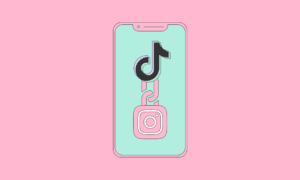Cities worldwide were silent during the pandemic, but something was brewing in Anamol Rajbhandari’s home—a user experience, digital designer, and tech enthusiast— who sat glued to his screen, looking at the analytics as numbers ticked upward in thousands. An Instagram AR effect he had created – a playful “Which Money Heist character are you?” quiz – started to gain in popularity. The series had over 65 million viewers worldwide for Season 4. The effect organically managed to gain over 18 million impressions and was used over 2 million times with zero promotional budget. It lit up phones in various parts of the globe with the Money Heist theme song “Bella Ciao” ringing out from countless videos.
In this conversation, we ask Anamol to reflect on how a spur-of-the-moment idea turned into a decent virality. He shares the thrills, the creative process, the happy accidents, and the lessons learned about timing, trends, and the quirks of platform UX.
Q: So, Anamol, take us back to the moment your Money Heist Instagram effect went viral. What was that like for you?
A: It felt like a fun time amid a not-so-fun lockdown period. It was an evening I hit ‘publish’ on the effect, and when I checked the following consecutive days, the analytics was just lighting up non-stop. I remember repeatedly refreshing the Spark Meta Studio insights as the impression counts doubled and tripled. I’d never seen numbers climb so fast. I created from an unknown creator account where I post some designs here and there, so watching the impressions skyrocket into the millions, eventually, got to over 18 million impressions, was opened over 4 million times, and was used over 2 million times.
I think it was a random morning when I saw a story from an actress from India using my effect with hundreds of thousands of followers, and that was one of many stories I saw about real people having a little moment of fun during lockdown – often with Bella Ciao playing, happy where they got The Professor and a big grin if they got Arturo as their character. It was thrilling and nice all at once.
Q: Before all that excitement, how did you actually create the effect? What went into it?
A: The idea came to me in the middle of watching Money Heist (La Casa de Papel). Season 4 was about to drop, and the hype was through the roof. I had seen those Character effects many times before, and I decided to create one. So I successfully made a couple of effects, which turned out alright, but Money Heist was a bit tricky.
First, I had to prepare the graphics for each character. Due to copyright, Instagram’s AR guidelines don’t allow using real actor photos, so I converted the characters’ faces into cartoon-like images. I essentially made mini digital caricatures of every major character. It took a bit of time but ensured the effect wouldn’t get rejected. With the artwork ready, I moved into Spark AR Studio and set up the logic for a randomized quiz.
One of the trickiest parts for me was integrating the audio, which I had not done before nor seem people do that at that point. I absolutely knew from the start I wanted the show’s theme song, “Bella Ciao,” to play. It’s so iconic and emotional – hearing it instantly puts you in the Money Heist mindset, so that was very important to me. I clipped a short segment of the song (to meet Instagram’s 15-second audio limit) and synced it with the effect’s animation.
Q: How did it feel when you used it for the first time?
A: I was testing a lot when I was creating it. I also had to record a demo video of myself using the finished effect – partly to promote it, and partly because Instagram’s effect submission required a preview video. But soon after publishing, I tested the whole thing on my phone, of course, seeing myself with a Money Heist character label and that music playing, it felt nice.
Q: The song “Bella Ciao” seems to have been a huge factor. Why was including the music so important?
A: Bella Ciao was the secret sauce, no doubt. It carries so much emotion and cultural weight. The moment people heard the first notes, they recognized it, and I knew they would be in the zone – excitement, nostalgia, and the urge to sing along. It gave users an instant emotional payoff. They were vibing to the theme song, humming or belting out “Bella ciao, bella ciao, bella ciao ciao ciao…” in their videos. I saw so many Story clips where someone would start nodding or dancing the second the music played. And this is exactly why it was necessary.
Q: The effect would assign users a random character from the show. Did you see any memorable reactions to certain character results?
A: Yes, definitely – the reactions were hilarious! Because it was random, people kept saying “Please no Arturo!” before the result popped up. For context, Arturo is one of the most despised characters in Money Heist everyone loves to hate. And sure enough, when someone got Arturo, their reaction was usually comic gold.
Q: It sounds like timing played a big role too. You launched during a global pandemic and right when Money Heist’s new season was trending. How did that impact the effect’s success?
A: Timing was essential. Honestly, I could have built the exact same effect at a different time, and it might have fizzled out, which did happen when I created the Squid Game effect. I released it early and led it to catch a perfect storm of circumstances. The world was at home with nothing to do and nowhere to go. And people were glued to their phones, desperately seeking entertainment and connection. Meanwhile, Money Heist Season 4 dropped on Netflix and became the talk of the internet. It was one of the hottest shows right then – all over social media, fans debating plot twists and favorite characters. So, there was a huge hunger for anything related to Money Heist.
I also noticed that the effect had aftershocks many months later when news of the next season surfaced, and later the final season in 2021, I saw another spike in traffic. Whenever Money Heist came back into the global conversation, people searched for related content and rediscovered my effect. It made me realize that if you can hook into a big cultural moment, your creation can ride that momentum far and wide. But it’s tough to get attention once the wave passes – until maybe the wave comes again.
Q: Going viral is great, but did it lead to anything tangible for you? Did Instagram or anyone reward you for all those millions of uses?
A: I often got asked, “So, how much money did you make from that?” And the short answer is: $0 from Instagram itself. At the time and still today, as far as I know, Instagram didn’t offer any monetization for effect creators, regardless of whether an effect was used 10 times or 10 million times, and you don’t earn a penny directly from those interactions. I was just one of many creators pushing content onto the platform. That said, the viral success did have some indirect benefits. I got a bunch of clients. However, if we’re talking about tangible metrics like social media followers on the account, the results were by far underwhelming. I only gained 40 followers, even though the effect was used more than 2 million times. The platform’s design basically decoupled work from the creators; there wasn’t an easy way to see who created it as the creator was hidden behind multiple interactions, although later on, they did have a secondary text in the story itself.
Q: Not every project can be a viral hit. What AR effects did you create for brands that didn’t take off? What happened there?
A: Yes, so shortly after that, I collaborated on an effect for SNOW, the teeth whitening brand. They wanted a branded Instagram effect to promote their product. Still, since there was no momentum except the familiarity of using the filter, no trending hook, and no emotional trigger or cultural moment behind it, It did okay with thousands of people using it because SNOW has a big audience on Instagram. It wasn’t something people would naturally share with friends for a laugh or out of fandom, so that was kind of expected. Just saying, “hey, here’s our product, in AR.” was not going to cut.
Q: Looking back now, what are your key takeaways from these experiences? Any advice for fellow designers or marketers chasing that kind of momentum?
A: Yeah, it all comes down to leveraging the momentum — because once it passes, it’s gone. It is extremely costly to create momentum out of nothing. So, the ultra-high leverage thing to do is to try to tap into those cultural waves, those big trends driven by high emotion. With Money Heist, I didn’t have a master plan. I just knew the show was blowing up, that people were obsessed with it, and that the song was essential. When the momentum is already there, and we can add something that resonates emotionally or culturally, it clicks, and people respond fast.
But, this wasn’t the first time I’d seen what momentum could do. In 2015, when Facebook launched Instant Articles, I learned how to make it work and offered it to clients before most designers even touched it. I didn’t have to convince anyone, they already wanted it. That’s when I realized it’s not always about chasing trends blindly but about being aware, being early, relevant, and offering the right thing at the right time. Although not an easy thing to do.



































